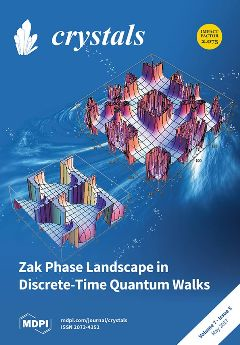Mixed-stacked organic molecular compounds near the neutral–ionic phase boundary, represented by tetrathiafulvalene-
p-chloranil (TTF-CA), show a unique phase transition from a paraelectric neutral (
N) phase to a ferroelectric ionic (
I) phase when subjected to decreasing temperature or applied
[...] Read more.
Mixed-stacked organic molecular compounds near the neutral–ionic phase boundary, represented by tetrathiafulvalene-
p-chloranil (TTF-CA), show a unique phase transition from a paraelectric neutral (
N) phase to a ferroelectric ionic (
I) phase when subjected to decreasing temperature or applied pressure, which is called an
NI transition. This
NI transition can also be induced by photoirradiation, in which case it is known as a prototypical ‘photoinduced phase transition’. In this paper, we focus on the ultrafast electron and molecular dynamics in the transition between the
N and
I states induced by irradiation by a femtosecond laser pulse and a terahertz electric-field pulse in TTF-CA. In the first half of the paper, we review the photoinduced
N-to-
I transition in TTF-CA studied by femtosecond-pump-probe reflection spectroscopy. We show that in the early stage of the transition, collective charge transfers occur within 20 fs after the photoirradiation, and microscopic one-dimensional (1D)
I domains are produced. These ultrafast
I-domain formations are followed by molecular deformations and displacements, which play important roles in the stabilization of photogenerated
I domains. In the photoinduced
I-to-
N transition, microscopic 1D
N domains are also produced and stabilized by molecular deformations and displacements. However, the time characteristics of the photoinduced
N-to-
I and
I-to-
N transitions in the picosecond time domain are considerably different from each other. In the second half of this paper, we review two phenomena induced by a strong terahertz electric-field pulse in TTF-CA: the modulation of a ferroelectric polarization in the
I phase and the generation of a large macroscopic polarization in the
N phase.
Full article





